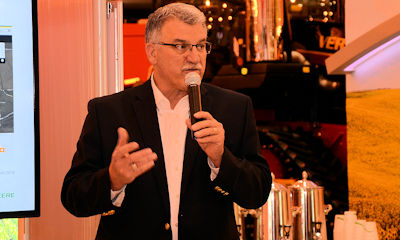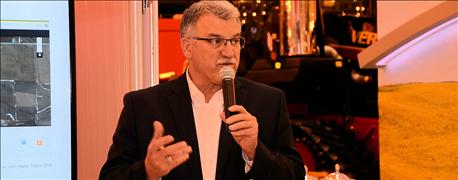
Earlier this week at the 2016 Commodity Classic, Dow AgroSciences announced the launch of a precision agronomy program. The program is designed to blend data with analysis and insight to help farmers optimize return on investment per acre by focusing on selecting the right seed for the location. The program, which Dow AgroSciences is providing to seed customers as a complimentary service, is enabled by connecting the grower with the agronomist through the John Deere Operations Center.

BIG DECISIONS: Prescriptions through the new precision agronomy program are focused on seed placement, which is one of the first and most important decisions growers make in a given year, Porter says. "Seed selection and placement on the acre are one of the most critical decisions in any given year that a grower would make," he says. "The outcome of their season, the outcome of their program, and the inputs they bring together are focused on that seed selection."
Keith Porter, Mycogen Seeds agronomy service leader, says one of the focuses of the new program is making the grower the focal point. "The growers and their experience bring forward the promise of precision ag in a practical way through this collaborative relationship between the grower and the agronomist," Porter says. "It encourages on-farm learning."
These prescriptions are focused on seed placement, which is one of the first and most important decisions growers make in a given year, Porter adds. "Seed selection and placement on the acre are one of the most critical decisions in any given year that a grower would make," he says. "The outcome of their season, the outcome of their program, and the inputs they bring together are focused on that seed selection."
A key feature of the program is the deliberate integration of an agronomist through the John Deere Operations Center. This way, the grower can receive farm data analysis from an agronomist in near real time. Growers can work with agronomists to place seed, assess crop progress, scout, monitor environmental conditions, and review yield results by hybrid, soil type, and population.
Mycogen agronomist Melissa Bell worked closely with growers like Paula Karlock, who farms in northeastern Illinois, as part of the pilot in the 2015 growing season – giving Bell a virtual in-cab experience with a real-time view of the field, and provide updates on what's going on in that location.
Soils on Karlock's farm vary from coarse sandy soil to fine clay, and combined with the 14.5 inches of rainfall in three weeks last year, variability is inevitable.
"As Mother Nature would have it, we had incredible amounts of rain, but really no year is flawless. This year the sand hills really out-yielded some of the lower elevation, heavier organic matter soils which we didn't really expect. What it did do was provide some really good insights," Bell says. "For example, one of the hybrids, a 111-day hybrid has a really good tolerance to wet feet. So we have a lot of confidence in placing that in some of those stressful situations in poorly drained soils."
"It will help tremendously in putting the right seed where it needs to be," Karlock says. "We tried to push the population on the sand and that particular variety did not respond to that. So we gained a lot of information from that and we've built a prescription for this year to put the seed where we need to place it, and we're also more confident going into 2016."
About the Author(s)
You May Also Like






